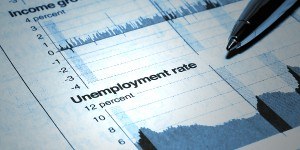Airlines are doing too little in the fight against global warming, a study funded by investors with $13 trillion of assets under management said on Tuesday.
The fast-growing sector accounts for two percent of world greenhouse gas emissions and should do more to manage risks of climate change, the Transition Pathway Initiative (TPI) said in a review of 20 of the world’s biggest listed airlines.
It rated Delta, Lufthansa, United Airlines and ANA Holdings as the best performers at managing the business risks and opportunities of climate change. But all could do more.
“Investors have a clear message to the aviation sector: When it comes to carbon performance they must be in it for the long haul,” said Faith Ward, co-chair of the TPI on behalf of the British Environment Agency Pension Fund.
“Investors do care … it’s about encouraging disclosure so we can make informed decisions,” she told Reuters.
TPI, which seeks to assess the performance of businesses in cutting carbon, groups 40 investors with $13 trillion under management, including BNP Paribas and Legal & General Investment Management. Its research is by the London School of Economics’ Grantham Research Institute.
More fuel-efficient planes, wider use of biofuels and ensuring that planes fly at full capacity would help to limit emissions.
TPI separately said easyJet and Alaska Air now had the most efficient fleets among the top 20 listed airlines, judged by their emissions per passenger kilometer flown.
At the other end of that scale, ANA, Japan Airlines, Korean Air and Singapore Airlines have the highest emissions intensities, it said.
Asked about the data, a Japan Airlines official said: “We are aiming to release our CSR (corporate social responsibility) measures toward 2030 in the next fiscal year.” ANA, Korean and Singapore did not immediately reply to a Reuters’ request for comment.
Lead author Professor Simon Dietz of the Grantham Research Institute said some airlines had adopted broad industry goals to cap net carbon emissions at 2020 levels, or to halve net emissions by 2050 from 2005 levels.
But that focus on net emissions often meant airlines could buy permits to emit carbon dioxide, rather than make cuts themselves.
“The issue is that we don’t know how much they are going to reduce their own flight emissions compared to buying offsets,” he told Reuters.
Dietz also said there were other effects of aviation apart from carbon dioxide that need more research. Contrails, for instance, may can cause high-level clouds that trap heat.
Under the 2015 Paris climate agreement, almost 200 governments agreed to cut emissions to help avert more floods, droughts and rising sea levels. They promised to “enhance public and private sector participation” in cutting emissions. (Reporting by Alister Doyle, with extra reporting by Junko Fujita in Tokyo and Heekyong Yang in Seoul.)





















 Dear Elon and Vivek: Insurance Commissioners Urge DOGE to Ditch FIO
Dear Elon and Vivek: Insurance Commissioners Urge DOGE to Ditch FIO  AI Scams, Emerging New Threats Among McAfee’s 2025 Cybersecurity Predictions
AI Scams, Emerging New Threats Among McAfee’s 2025 Cybersecurity Predictions  Property and Casualty Insurance Trends for 2025
Property and Casualty Insurance Trends for 2025  Surviving the ‘Silver Tsunami’: Closing the Talent, Skills Gap in Underwriting
Surviving the ‘Silver Tsunami’: Closing the Talent, Skills Gap in Underwriting 






